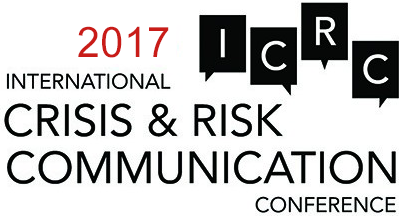
Professor of Sociology and Director of Risk and Crisis Research Centre
Mid Sweden University
Sweden
Anna Olofsson is Professor of Sociology and Director of RCR. She is the chair of the European Sociological Association’s Risk and Uncertainty Research Network (RN22) and member of Riskkollegiet’s Board of Experts. She has more than 15 years’ experience studying risk, concentrating primarily on risk perception and communication as well as social vulnerability from a gender, ethnicity and age perceptive.
2015
The Unintended Consequences Of Human Crisis Communication – A Critical Analysis
Co-presenters: Anna Olofsson, Susanna Ohman, Katarina Giritli-Nygren, and Saman Rashid
This presentation will take as departure the questions of ‘How do value systems related to nature and society figure in crisis communication during a natural disaster?’ and ‘What unintended consequences might this have on the way crisis communication is designed and for the recipients?’ The presentation is based on original academic research of a national natural disaster; the crisis communicating flow during the one month long widespread and devastating wildfire in Sweden, the summer of 2014.
Even though fires occur regularly in Sweden, the scale and intensity of the wildfire that raged through boreal forests in August 2014 was the largest wildfire Sweden has seen in at least four decades. It charred more than 150 square kilometers (60 square miles), killed one person, and forced thousands to evacuate their homes We already know that the media are crucial players in the construction of, and communication about, risk but they might have even more influence when the public feel that they are not getting information from responsible organizations, as happened in Sweden during the summer in 2014. It is obvious that Sweden was not prepared, and by critically analyzing the reporting in mass media, we can shed light on the developments of risk discourses, struggles over discursive legitimacy, and shifts in argumentation to legitimate or un-legitimate certain actors and actions in relation to the disaster. Hence, trace relations of power expressed through the language of risk and blame. Using such perspectives, opens up for questions of how notions of risk and crisis come to delimit what it is possible to communicate at natural disaster such as this, what consequences it has not only for the involved organizations but also on a societal level, and who the winners and losers of this process are. The critical perspective is central to ensure that questions of ideology, conflict, and power enter the equation. Starting with ‘values’, ‘power’, ‘creation of meaning’, and ‘legitimacy’, attention will be brought to bear on questions such as the value systems through which meanings are ascribed to a crisis or disaster; the forms of understanding used to legitimize crises; and the consequences for different societal actors. The presentation is based on first hand empirical analyses, employing a critical discourse analysis, of newspaper articles from three different newspapers; one national agenda-setting morning newspaper, one national tabloid and one local newspaper. All coverage in these newspaper from the period of the wildfire (24th of July to 24th August 2014) has been selected and analyzed.
The tentative result shows how Swedish values about nature as sacred is mirrored in the beginning of the fire, which to some extent overrules the reporting of the magnitude and spread of the fire. The results also show that the content of the coverage was very different between the three newspapers. The local media worked with local and regional authorities to efficiently communicate relevant information about the fire, whereas the national media tended to start a blame game pretty fast, which mirrored traditional values of societal responsibility and individual vulnerability. From these results the two questions raised in the beginning will be analyzed and answered.


